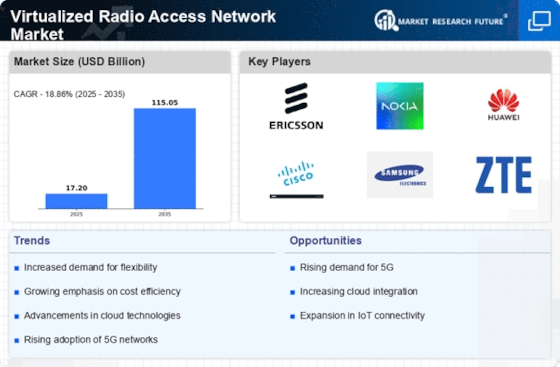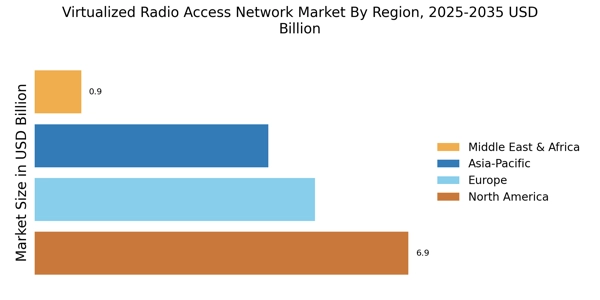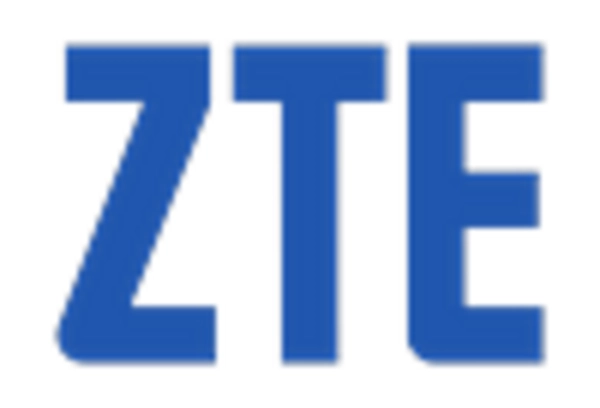The Virtualized Radio Access Network (vRAN) market is currently characterized by a dynamic competitive landscape, driven by the increasing demand for efficient and flexible network solutions. Key players such as Ericsson (SE), Nokia (FI), and Huawei (CN) are at the forefront, each adopting distinct strategies to enhance their market positioning. Ericsson (SE) emphasizes innovation through its continuous investment in research and development, focusing on advanced software solutions that optimize network performance. Meanwhile, Nokia (FI) is pursuing strategic partnerships to bolster its vRAN offerings, thereby enhancing its competitive edge in various regional markets. Huawei (CN), on the other hand, appears to leverage its extensive global presence to expand its vRAN solutions, particularly in emerging markets, which collectively shapes a competitive environment that is both collaborative and competitive.
In terms of business tactics, companies are increasingly localizing manufacturing and optimizing supply chains to enhance operational efficiency. The market structure is moderately fragmented, with several players vying for market share, yet the influence of major companies remains substantial. This competitive structure allows for a diverse range of solutions, catering to various customer needs while fostering innovation across the sector.
In August 2025, Ericsson (SE) announced a strategic partnership with a leading telecommunications provider in Asia to deploy its latest vRAN technology. This collaboration is expected to enhance network efficiency and reduce operational costs, thereby solidifying Ericsson's position in the Asian market. The strategic importance of this partnership lies in its potential to accelerate the adoption of vRAN solutions in a region that is rapidly transitioning to 5G technologies.
In September 2025, Nokia (FI) unveiled a new vRAN solution designed specifically for urban environments, aimed at addressing the unique challenges posed by dense population centers. This initiative reflects Nokia's commitment to innovation and its understanding of market demands. By tailoring solutions to specific environments, Nokia is likely to enhance its appeal to urban telecom operators, thereby gaining a competitive advantage.
In October 2025, Huawei (CN) launched a comprehensive vRAN platform that integrates artificial intelligence capabilities to optimize network management. This move is indicative of Huawei's focus on digital transformation and its intent to lead in AI integration within the telecommunications sector. The strategic significance of this launch lies in its potential to improve operational efficiencies and provide telecom operators with advanced tools for network optimization.
As of October 2025, the competitive trends in the vRAN market are increasingly defined by digitalization, sustainability, and the integration of artificial intelligence. Strategic alliances are becoming more prevalent, as companies recognize the need for collaboration to drive innovation and enhance service offerings. Looking ahead, competitive differentiation is likely to evolve from traditional price-based competition to a focus on technological innovation, supply chain reliability, and the ability to deliver tailored solutions that meet the specific needs of diverse markets.


















Leave a Comment